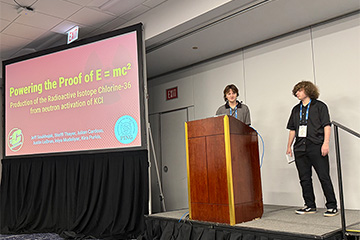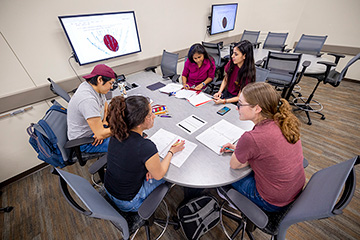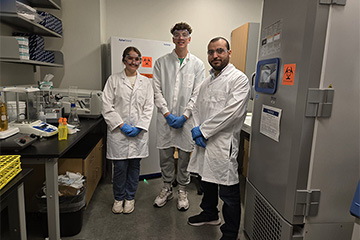How climate and infrastructure affect flood risk
Faculty member Rod Lammers provides insight
The summer of 2022 has seen several devastating flooding incidents across the United States. Michigan is no stranger to flooding either. Detroit regularly faces the hazards of flooding. Sanford is two years removed from flooding caused by dam failures. And in June 2017, Central Michigan University was impacted by significant flooding after six inches of rain fell overnight and caused millions of dollars in damages to buildings and grounds.
Rod Lammers, assistant professor in Environmental Engineering at CMU, researches ways to improve the management of our water resources – including how to reduce flood risk. He shared his thoughts on some of the biggest questions and concerns surrounding flooding today.
Q: How do you see climate change affecting flood risk?
It is pretty clear from the data that the rainstorms have become more intense and this trend is expected to continue with climate change. When more rain falls in a short period, flood risk increases. Most of our flood control and drainage infrastructure (think big things like dams and reservoirs, but also the storm drains on your streets) was designed decades ago, using outdated rainfall data. That means this infrastructure is not prepared to handle the more intense storms of the present, and certainly not of the future.
Q: How much of a factor does the infrastructure of cities play into the severity of flooding damage?
There are two ways. First, floods are natural, but flood damages occur when we build in areas that are prone to flooding. Most cities are built along rivers, lakes, or the ocean and therefore have infrastructure in areas that are likely to flood. Secondly, all the buildings, roads, and parking lots in cities prevent rainfall from soaking into the ground. This increases the amount of water on the surface, making flooding worse.
Q: What types of things can local governments and states do to try to get ahead of these issues and improve their current systems?
One thing is to use updated rainfall data in infrastructure design. Many cities are still building their infrastructure based on decades-old data. This would benefit from federal investment since the National Oceanic and Atmospheric Administration collects and analyzes this data nationally. Using newer data and forecasts of what rainstorms may look like in 20, 50, or 100 years can help us build new infrastructure that is prepared for the climate of the future.
There has also been increasing recognition of the value that so-called “natural” infrastructure can play in flood management. Forests and wetlands act like sponges, soaking up rainfall and reducing flood risk. Floodplains store a lot of water, reducing flooding downstream. Protecting and restoring these areas can help reduce flooding and protect our other built infrastructure.
And finally, floods can’t damage infrastructure that isn’t there. Cities and states can do a better job of planning where infrastructure gets built, and keeping people from building homes and businesses in flood-prone areas.
Q: Are there any simple things people can do to help prevent flooding in their areas?
The simplest thing people can do is to be aware of their own flood risk. There are tools available to help you understand your level of risk, and how climate change may alter this risk. Another simple action is to make sure your storm drains are clear of leaves and debris. Finally, advocating to protect wetlands and floodplains from development can help maintain important natural infrastructure in your area.
 About Rod Lammers
About Rod Lammers
Roderick Lammers received his Bachelor’s degrees from Purdue University. He then received his Ph.D. and M.S. degrees from Colorado State University working on modeling the water quality impacts of stream channel erosion. After earning his degrees, he worked as a postdoctoral associate and research scientist at the University of Georgia. Lammers joined Central Michigan University as an Assistant Professor in 2021.
His research is focused on using computer modeling to better understand complex water resources problems and designing solutions. He works mostly on urban stormwater, stream channel restoration, and flood management. He also has experience as an engineering consultant working on environmental remediation and water management.




